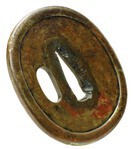-
Posts
2,281 -
Joined
-
Last visited
-
Days Won
17

Toryu2020 replied to jason_mazzy's topic in Auctions and Online Sales or Sellers

Toryu2020 replied to Ted Tenold's topic in Auctions and Online Sales or Sellers

Toryu2020 replied to simonjbinks's topic in General Nihonto Related Discussion

Toryu2020 replied to jason_mazzy's topic in Auctions and Online Sales or Sellers

Toryu2020 replied to simonjbinks's topic in Translation Assistance

Toryu2020 replied to simonjbinks's topic in Translation Assistance

Toryu2020 replied to simonjbinks's topic in Translation Assistance

Toryu2020 replied to Toryu2020's topic in General Nihonto Related Discussion

Toryu2020 replied to Toryu2020's topic in General Nihonto Related Discussion

Toryu2020 replied to watsonmil's topic in General Nihonto Related Discussion

Toryu2020 replied to cisco-san's topic in General Nihonto Related Discussion

